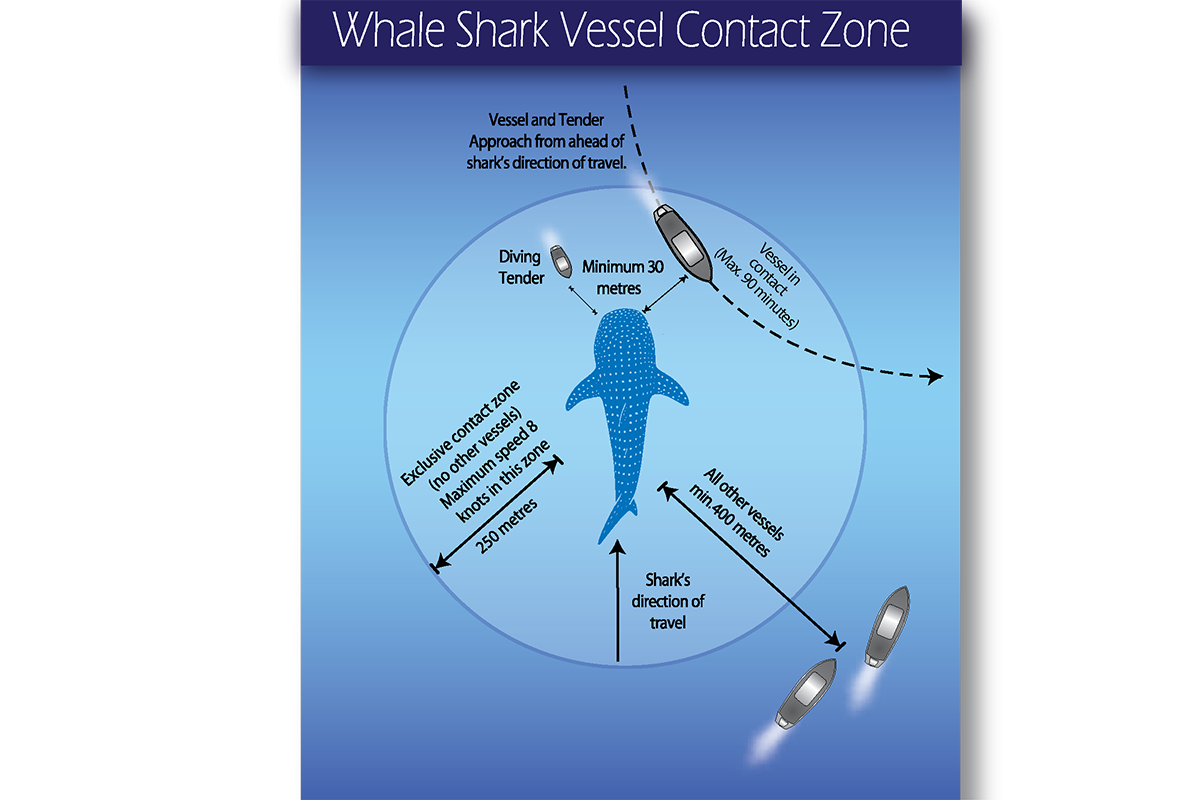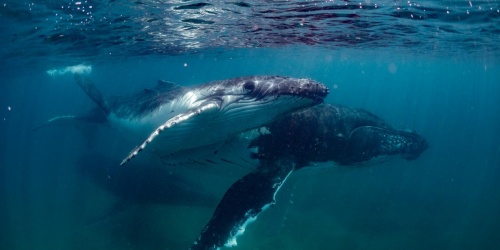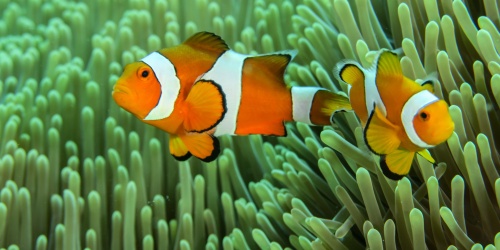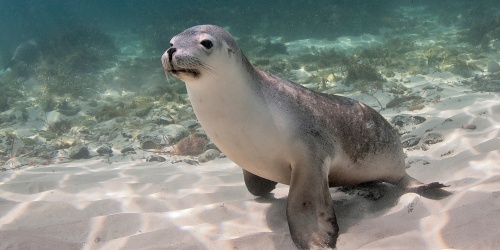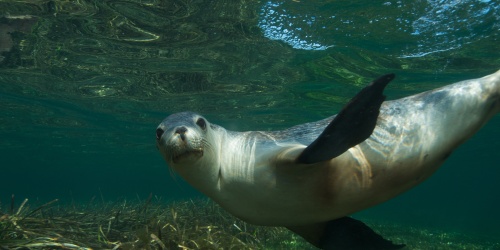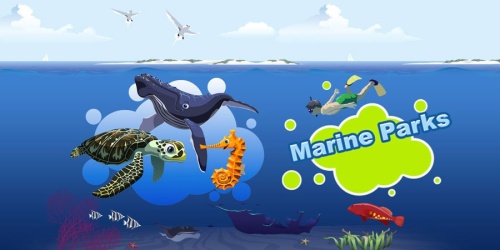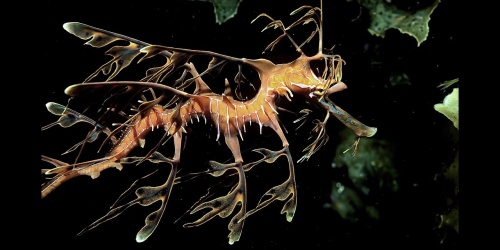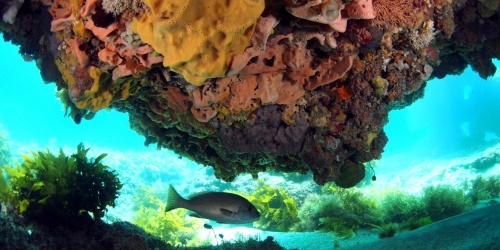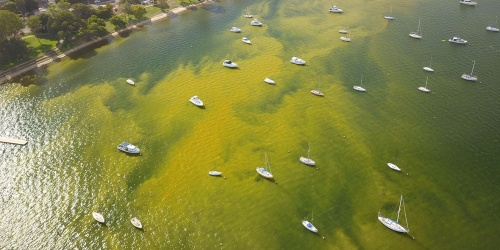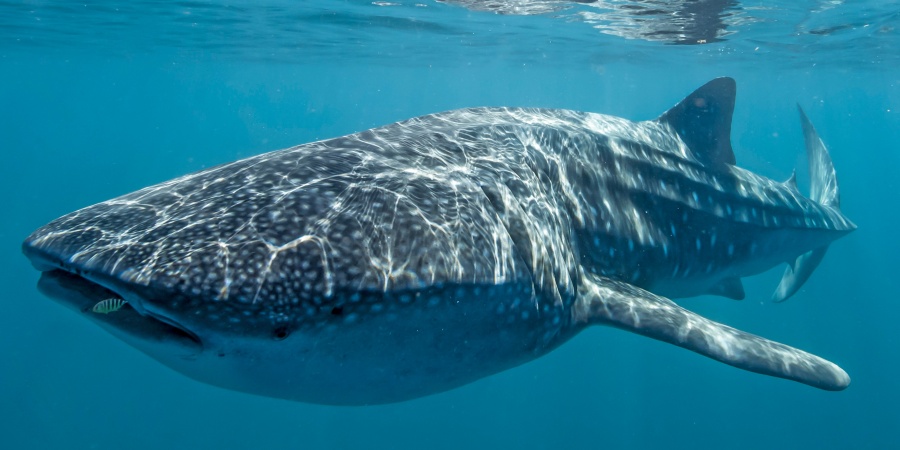
Photo - Tourism WA
The whale shark is Western Australia's marine animal emblem and is protected in Australian waters under both state and federal law.
Despite their huge size, these gentle giants are harmless filter feeders that cruise the world's oceans looking for plankton.
Ningaloo Marine Park is one of only a few places in the world where whale sharks appear regularly in near-shore waters in numbers, where they are easily accessible to observers.
- The annual whale shark aggregation at Ningaloo is linked to an increase in productivity of the region.
- The whale sharks are most reliably seen swimming and feeding in Ningaloo waters from March to July.
- Some years they remain in the area into August and even September and October.
Whale sharks can reach up to 18 metres in length, but at Ningaloo Marine Park they are generally between two and 12 metres in length.
- A 12 metre shark weighs up to 11 tonnes and has a mouth over a metre wide.
- They have three prominent ridges along each side of the body and a distinct pattern of white spots and stripes against a dark blue/grey background.
- Whale sharks have a broad, flattened head, with a very large mouth nearly at the tip of the snout.
- The eyes are small and located at the sides of their head.
Threats
In other parts of the world, they are hunted for their meat (known as ‘tofu fish'), fins are used for soup, liver for oil, cartilage for health supplements, and their skin for leather. No targeted legal fisheries exist, however, little information is available on illegal poaching in some countries.
- Boat strikes while whale sharks are swimming near the surface are a problem in the north-west of Western Australia, especially with the increasing number of boats.
- Pollution, increased boat traffic, climate change and the world-wide growth of nature-based tourism are also contributing towards habitat loss, reduced food availability and reduced health of whale shark populations.
Play your part
Join a Ningaloo whale shark interaction tour—part of your fees goes towards whale shark conservation and research.
- Follow the legislated separation distances when intending to swim with whale sharks.
- Reduce your boat's speed in areas frequented by whale sharks, and keep watch for them, especially during the whale shark ‘season'. · Submit photos to the ECOCEAN photo identification library to give scientists information on population numbers and movement patterns.
- Never discard fishing line, nets, plastic bags and other rubbish anywhere, especially into the ocean. Collect and dispose of any marine debris you come across.
- Contact local community groups or government departments involved with whale shark conservation to see how you can help.
- Refuse to buy or eat whale shark products such as shark fin soup and whale shark meat (tofu fish) when overseas.
Whale shark management plan
With particular reference to Ningaloo Marine Park
Whale shark research and monitoring
Whale sharks are difficult to study because, despite their huge size, they tend to be solitary, travel great distances, and appear sporadically.
To better protect whale sharks, it is crucial that we increase our understanding of their biology, ecology, movement patterns and life history.
Photo ID
Whale sharks have characteristic patterns of white spots and stripes on a dark blue background on their dorsal surface.
- Each whale shark has its own unique pattern that can be used, along with the sex and any distinguishing scar marks, to identify individual whale sharks.
- Scientists use whale shark spot patterns to accurately identify individual whale sharks and gain an understanding of their movement patterns and morphological changes of individuals over time.
- The ECOCEAN photo identification library stores, analyses and matches photos to document individual whale sharks that visit Ningaloo Marine Park each season, including those that return over many years. (By submitting your whale shark photos, you are helping scientists to better understand and assist in protecting these amazing fish).
Telemetry
Short and long-term movements and behaviours of whale sharks are being investigated using telemetry. This involves attaching a radio or satellite transmitter to the whale shark, then tracking the shark's movement over a period of time. Many different types of tag have been used:
- Acoustic tag data helps us understand the short-term movements, residency rates and natural behaviour of whale sharks, and gives us information on swimming speeds, depth profiles and positions in relation to associated features in the surrounding water column and ocean floor. Data retrieved from acoustic tags has shown that sharks follow ocean ridges where plankton accumulate and that they also follow the vertical migration of plankton to the surface at night.
- Satellite tag data enables the observation of broad-scale movements of whale sharks away from Ningaloo Reef, and has shown that whale sharks can travel thousands of kilometres and also dive to depths greater than 1700 metres.
All tagging is carried out under permit and within animal ethics guidelines.
Tissue sampling
Scientists collect tissue samples annually from whale sharks at Ningaloo to contribute to global studies on whale shark genetics. They can determine whether Ningaloo whale sharks are related to those in other areas of the world. These samples can also help determine what whale sharks are feeding on, by analysing the fatty acids in the tissues.
Swimming with whale sharks
Swimming with whale sharks is an exciting and rewarding experience. These huge yet gentle giants visit Ningaloo Marine Park, off the north-west coast of Western Australia, between March and July each year. Their seasonal visits have led to the development of an increasingly popular, ecotourism industry.
Parks and Wildlife is responsible for protecting and managing whale sharks in Western Australian waters.
Visitors wanting to swim with whale sharks in Ningaloo Marine Park have increased in number from just 1,000 in 1993 to over 36,000 in 2022. The department has therefore introduced a licensing system to manage commercial operations within Ningaloo Marine Park and reduce disturbance to whale sharks.
- Only operators licensed by the department are permitted to conduct commercial tours with whale sharks.
- Two legislated interaction protocols have also been developed in conjunction with tour operators, applying to people swimming with whale sharks, and vessels (both private and commercial) operating in the vicinity of a whale shark.
Interaction protocols
To ensure you have a safe, enjoyable experience, and to prevent the animals from being harmed or disturbed, you must follow the interaction protocol when interacting with whale sharks.
Approach zone
An approach zone of a 250 metres radius applies around any whale shark.
- Only one vessel at a time may operate within the zone for a maximum of 90 minutes and at a speed of six knots or less.
- The first vessel within that zone is considered to be ‘in contact’.
- A second vessel to arrive must keep a distance of 250 metres from the shark, and any other vessels must be 400 metres from the shark.
Vessel operators in the approach zone:
- must not approach closer than 30 metres to a shark
- should approach from ahead of the shark’s direction of travel when dropping swimmers into the water
- must display both whale shark (commercial vessels only) and dive flags when swimmers are in the water.
Commercial tour operators operate under similar requirements to other vessels but specific licence conditions also apply to their operation.
Swimmers in the approach zone must not:
- Attempt to touch or ride on a whale shark.
- Restrict the normal movement or behaviour of the shark.
- Approach closer than three metres from the head or body and four metres from the tail.
- Use flash photography or cameras on extension poles.
- Use motorised propulsion aids.
- Exceed more than 10 people in the water at any one time.
Reducing disturbance
Whale sharks can be disturbed by uncontrolled snorkelling and vessel activities, and may display avoidance behaviours such as banking, diving, eye rolling and changing speed or direction in response to swimmers and boats.
Generally, the best way to enjoy a whale shark experience is to participate in a tour with experienced and trained whale shark tour operators, who are able to locate the sharks and correctly apply the legislated interaction protocols. This will give you a greater chance to:
- View the whale shark clearly and for longer.
- Minimise disturbance to the whale shark.
- See whale sharks behaving normally in their natural environment - the essence of the ecotour experience.
